Five Sicilian dishes
for a delicious summer
“As soon as he opened the refrigerator, he saw her. The caponatina! Fragrant, colorful, abundant, filled a soup plate, a portion for at least four people”
(Excursion to Tindari, Andrea Camilleri)
CAPONATA
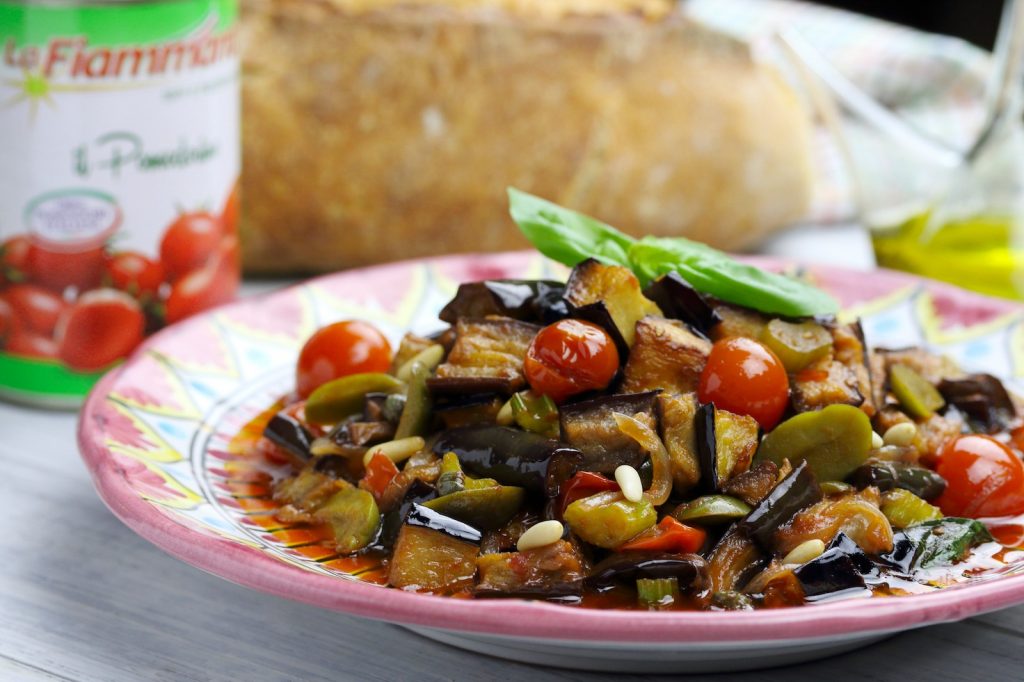
In the Sicilian summer aubergines cannot be missing, a vegetable that immediately reminds us of pasta alla Norma and of a peculiar combination of colors and flavors: caponata. Served as an appetizer or side dish, it is based on eggplant, tomato sauce, capers, celery, onion, olives, oil, salt, vinegar, sugar and, in some variations, peppers, pine nuts and toasted almonds. There are several theories on its name: its origins could derive from the Greek capto (cut) which reflects its aesthetics (a self-respecting caponata has its vegetables diced) or from the Latin caupona (tavern), a meeting place for seafarers. Alternatively, it could have been born as a cheap substitute for a fancier dish based on dolphin-fish (capone in Sicilian) which was served with vegetables and a sweet and sour sauce.
TIME FOR SNAKE GOURDS
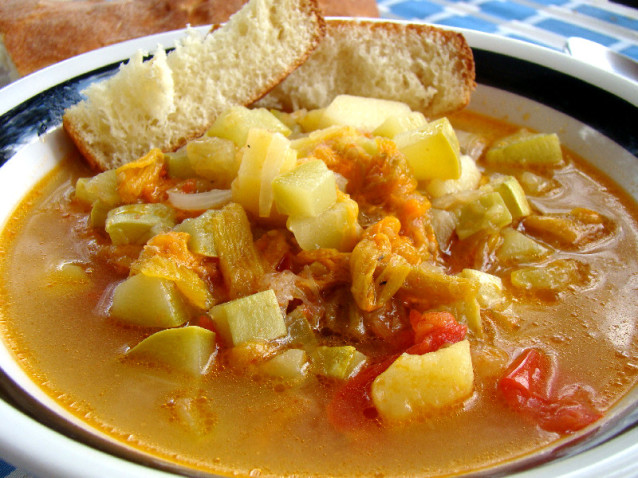
Another staple of summer cousine is snake gourd – which in Sicily is known as cucuzza. With its narrow and long shape, it can even exceed one meter in length, especially when grown in pergola cultivations. Its tender, delicate tasting, pulp can be combined with onions and potatoes, to which you can also add tomatoes, to prepare a soup, which can also be enjoyed cold, or in a more delicious version: fried and then added to pasta with the basil or mint and topped off with a sprinkling of parmesan or ricotta salata.
PASTA WITH TENERUMI
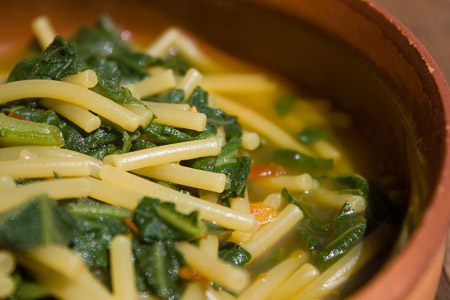
Sicilian cousine is often all about making the most of – what seem like – leftovers. On this note, snake gourds have another, very delicious, use: pasta with tenerumi. While most people are tempted to throw away their wide and tender leaves (also known as taddi), Sicilians have learned to put them to good use in a creative pasta dish. The greens are often blanched and then used, along with tomatoes and garlic, as the ingredient for a sauce with a delightful hint of sweetness. Broken up spaghetti noodles (which Sicilians call pizziati) are the go to pasta for this first course, often sprinkled with plenty of salty ricotta cheese or pecorino.
COUS COUS
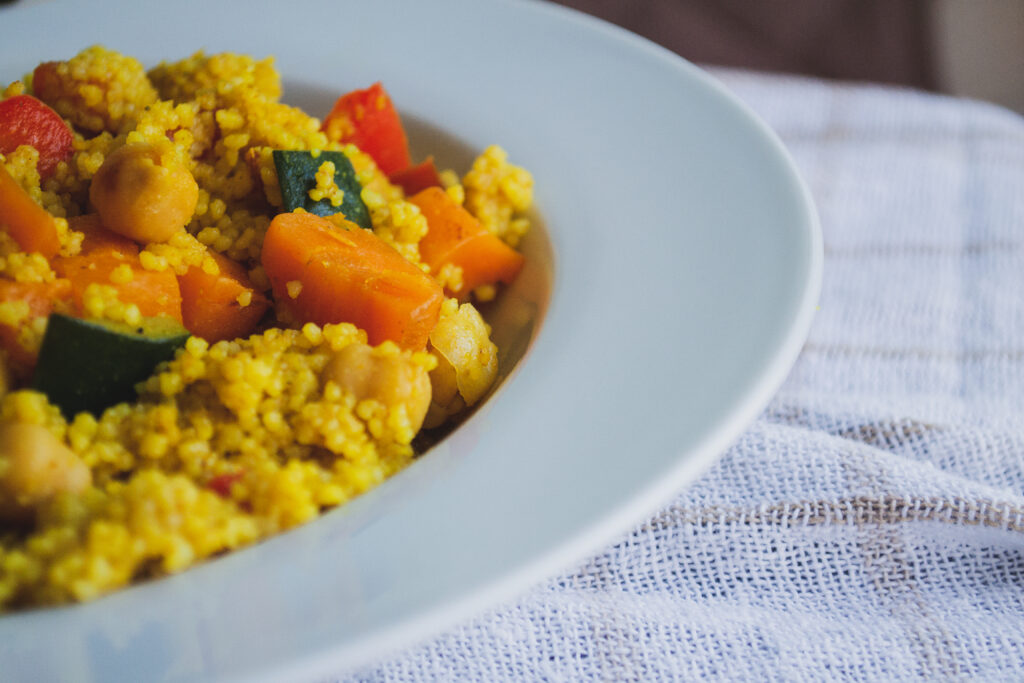
Starting from the gesture of nibbling (aggregating) the semolina, cous cous has always been a symbol of inclusion, reflecting the union of the peoples of the Mediterranean. There are places in Sicily that preserve a long tradition of this convivial dish, especially in the Trapani area, to which events such as the famous Cous Cous Fest of San Vito Lo Capo are dedicated. The habit of preparing it is so engrained in Sicilian customs that some of the traditional tools, like the mafaradda (a earthenware container in which the semolina is mixed with the addition of a little salted water at a time) and the cuscusiera (earthenware pot with holes for steam cooking), were once part of the wedding dowry of brides in Trapani. In Sicily cous cous often comes in a fish or vegetarian version, but one thing is for certain, eating it together is always a celebration.
GELO DI MELLONE
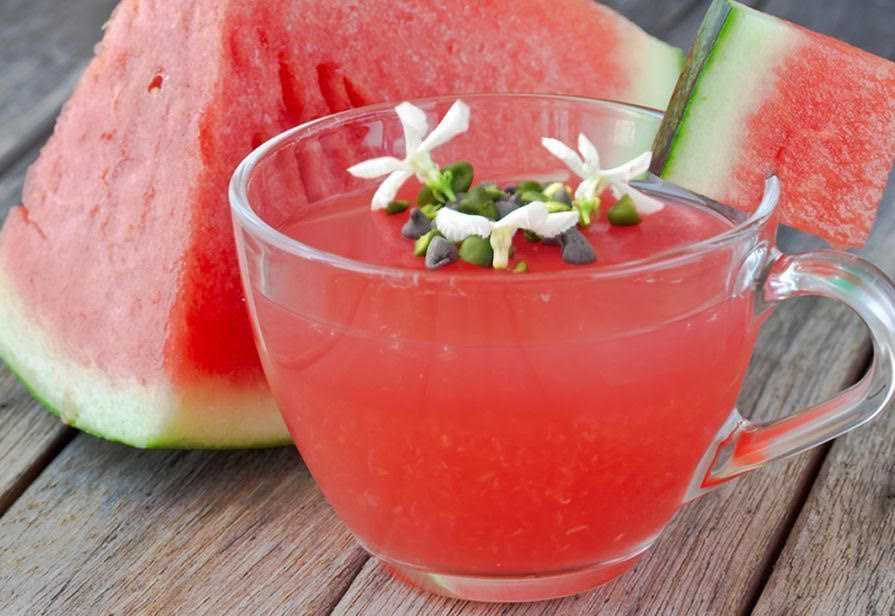
Even though the Italian for watermelon is indeed melone, the name of this dish is not a typo, rather the Sicilian name for the sweet and refreshing fruit which is often enjoyed in the form of a tasty dessert. Watermelons are turned into jelly, flavored with cinnamon, jasmine flowers and dark chocolate shavings and is to be eaten with a spoon. It is not uncommon, however, to use the same preparation as filling for a tart.
Translated by Francesco Raciti



